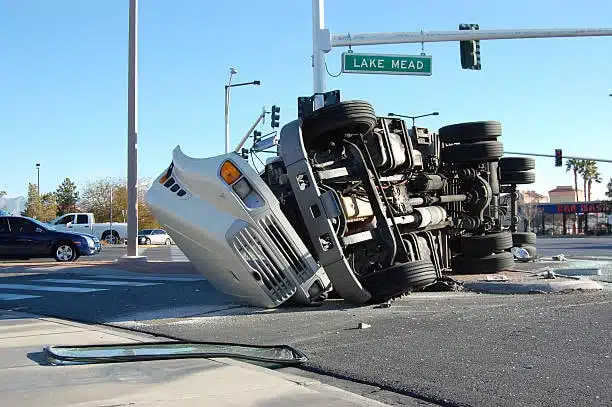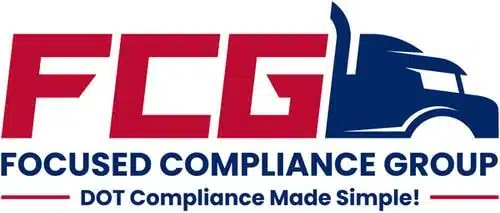In the dynamic world of commercial transportation, where tight deadlines meet complex logistics, safety can never be compromised. Behind the scenes of every truck on the road, every driver at the wheel, and every company dispatching freight is a comprehensive set of rules designed to ensure order, safety, and accountability. These rules are known as the Federal Motor Carrier Safety Regulations (FMCSR).
The entities involved in adhering to FMCSR include drivers, trainers, supervisors, and dispatchers, highlighting the comprehensive nature of the regulations intended to improve safety and compliance in the transportation industry.
For those operating in the commercial transportation industry, compliance with FMCSR is not just a legal requirement—it’s a business imperative. Whether you are a fleet manager, safety director, or independent owner-operator, understanding these regulations can mean the difference between smooth operations and costly fines, audits, or worse.
At Focused Compliance Group, our mission is to help you navigate these rules with clarity and confidence. This guide will explain what the FMCSR are, who they apply to, and how they impact your business. We’ll also highlight how our services can support your compliance strategy.
What Are the Federal Motor Carrier Safety Regulations (FMCSR)?

The Federal Motor Carrier Safety Regulations are a comprehensive body of rules published by the Federal Motor Carrier Safety Administration (FMCSA), a division of the U.S. Department of Transportation (DOT). These FMCSA regulations apply to commercial motor vehicle (CMV) operators engaged in interstate commerce and serve as the cornerstone of safety enforcement in the trucking and bus industries.
The FMCSR spans dozens of regulation parts, each addressing a specific aspect of transportation safety and operational compliance. These regulations cover everything from driver qualifications, vehicle inspections, and drug and alcohol testing to hours of service (HOS), financial responsibility, and hazardous materials transport.
The core purpose of FMCSR is to enhance road safety and reduce the number of crashes, injuries, and fatalities involving large commercial vehicles. These rules are structured to promote accountability at all levels—from individual drivers to large fleet operations—and are enforced through audits, roadside inspections, data monitoring, and penalty systems.
Who Is Required to Follow FMCSR?
FMCSR compliance is mandatory for companies and drivers operating commercial motor vehicles in interstate commerce. According to FMCSA, a commercial motor vehicle (CMV) is defined as one that meets any of the following criteria:
-
Has a gross vehicle weight rating (GVWR) or gross combination weight rating (GCWR) of 10,001 pounds or more
-
Is designed or used to transport more than 8 passengers (including the driver) for compensation
-
Is designed or used to transport more than 15 passengers (including the driver) without compensation
-
Is used to transport hazardous materials that require placarding under the Hazardous Materials Transportation Act
Commercial drivers play a crucial role in adhering to FMCSR, ensuring safety and efficiency within the motor carrier industry.
While the FMCSR is federally mandated for interstate commerce, many states adopt the regulations (or similar ones) for intrastate operations. Therefore, even if your vehicles do not cross state lines, you may still be subject to the same standards.
Carriers who fail to comply with FMCSR may face out-of-service orders, civil penalties, and a damaged safety record that could affect business relationships and insurance costs.
Key Components of the FMCSR

The FMCSR is organized into numerous parts, each focusing on a specific compliance area. The FMCSR sets minimum standards for the safe operation of commercial motor vehicles. Below, we explore some of the most critical parts relevant to most commercial carriers and operators.
Part 382 – Drug and Alcohol Testing
One of the most vital sections of FMCSR, Part 382, mandates that all CDL drivers in safety-sensitive roles be subject to a comprehensive drug and alcohol testing program. This includes multiple types of testing throughout the employment cycle.
Testing Types Include:
-
Pre-employment testing: Conducted before a driver can perform any safety-sensitive functions.
-
Random testing: Conducted throughout the year without prior notice.
-
Post-accident testing: Required if the accident meets certain criteria (e.g., a fatality or citation issued alongside injuries or vehicle damage).
-
Reasonable suspicion testing: Initiated when a trained supervisor observes signs of substance use.
-
Return-to-duty and follow-up testing: For drivers returning to duty after a violation of testing rules.
Failure to implement or maintain a compliant drug and alcohol testing program is one of the most common and costly violations in FMCSA audits. Partnering with a qualified Third-Party Administrator (TPA) like Focused Compliance Group ensures you’re fully covered and audit-ready.
Part 383 – Commercial Driver’s License (CDL) Standards
This section lays out the requirements for commercial drivers to obtain and maintain a Commercial Driver’s License (CDL), as well as the circumstances under which one is required.
A CDL is mandatory if:
-
The vehicle’s GVWR exceeds 26,000 pounds
-
The vehicle is towing another unit over 10,000 pounds
-
The vehicle is transporting 16 or more passengers
-
The vehicle is hauling hazardous materials requiring placards
In addition to these requirements, CDL holders must obtain the appropriate endorsements (e.g., hazardous materials, tank vehicles, passenger vehicles) based on the type of cargo or equipment being transported. Drivers may be disqualified from holding a CDL for serious traffic violations or drug and alcohol testing failures.
Part 391 – Qualifications of Drivers

Part 391 sets forth the minimum qualifications for drivers operating CMVs and details the Driver Qualification File (DQF) requirements for employers.
Proper driver qualifications help in identifying and managing high-risk carriers, ensuring compliance with the Compliance, Safety, Accountability (CSA) program.
Key Driver Requirements:
-
Minimum age of 21
-
Valid CDL license with appropriate endorsements
-
Ability to read, write, and speak English
-
DOT medical certification from a licensed Medical Examiner
-
Acceptable driving history and employment safety record
Driver Qualification Files Must Include:
-
Application for employment
-
Motor Vehicle Records (MVR) for past three years
-
Medical Examiner’s Certificate and verification of examiner credentials
-
Annual reviews and certifications of violations
-
Documentation of training and road tests
Maintaining a DQF for each active driver is not optional—it’s a legal necessity and often one of the first things reviewed during compliance audits.
Part 395 – Hours of Service (HOS)

Fatigue is a major contributing factor in CMV-related crashes. To combat this, the FMCSR includes strict Hours of Service (HOS) regulations that define how long a driver can operate and when they must rest. These HOS regulations are designed to improve safety by reducing driver fatigue.
Key HOS Rules:
-
11-Hour Driving Rule: Drivers may drive a maximum of 11 hours after 10 consecutive hours off-duty.
-
14-Hour Limit: Drivers may not drive beyond the 14th hour after coming on duty.
-
30-Minute Break: Required after 8 hours of driving time.
-
60/70-Hour Limit: Drivers may not exceed 60 hours on duty in 7 days or 70 hours in 8 days.
-
34-Hour Restart: Drivers can reset the 60/70-hour limit by taking 34 consecutive hours off-duty.
-
Use of Electronic Logging Devices (ELDs) is mandated to track hours accurately.
Non-compliance with HOS rules is one of the most frequently cited violations during roadside inspections and DOT audits.
Part 396 – Vehicle Inspection, Repair, and Maintenance
This section emphasizes the importance of proper vehicle upkeep, mandating that motor carriers implement a systematic maintenance program for all CMVs under their control.
Safety information systems play a crucial role in tracking vehicle maintenance and inspections, ensuring compliance and enhancing overall safety.
Carrier Responsibilities:
-
Conduct daily vehicle inspections by drivers
-
Ensure vehicles undergo annual inspections by qualified personnel
-
Maintain inspection, maintenance, and repair records
-
Document and promptly correct any mechanical deficiencies
-
Train drivers on reporting defects and issues
Part 396 supports the principle that a well-maintained vehicle is a safer vehicle. Neglecting proper maintenance not only endangers lives but invites regulatory penalties.
Part 40 – Testing Procedures for Drugs and Alcohol
While technically not part of FMCSR, Part 40 of the DOT regulations governs how drug and alcohol tests are conducted. This includes strict protocols for:
-
Specimen collection and handling
-
Laboratory testing procedures
-
Roles of the Medical Review Officer (MRO)
-
Responsibilities of employers, collectors, and service agents
-
Rights of employees and split-specimen procedures
Understanding and following Part 40 procedures is critical for any employer operating under FMCSR.
Part 387 – Financial Responsibility and Insurance Requirements
FMCSR mandates that carriers maintain certain minimum levels of insurance coverage depending on their operation type and cargo.
Minimum Coverage Levels:
-
$750,000 for general freight
-
$1,000,000 for oil transport
-
$5,000,000 for hazardous materials
Proof of financial responsibility is documented via Form MCS-90, which must be filed and maintained for compliance.
The Role of CSA Scores and SMS in FMCSR Compliance
The FMCSA’s Compliance, Safety, Accountability (CSA) program tracks carrier performance using data from inspections, crash reports, and investigations. The Safety Measurement System (SMS) assigns scores in seven Behavior Analysis and Safety Improvement Categories (BASICs):
-
Unsafe Driving
-
Hours-of-Service Compliance
-
Driver Fitness
-
Controlled Substances and Alcohol
-
Vehicle Maintenance
-
Hazardous Materials Compliance
-
Crash Indicator
The FMCSA’s primary mission includes reducing fatalities involving large trucks and buses.
Poor scores in any BASIC can result in intervention, audits, or out-of-service orders. Maintaining good CSA scores isn’t just about avoiding enforcement—it’s essential for maintaining good business standing and lowering insurance premiums.
Why FMCSR Compliance Matters for Your Business

Compliance with FMCSR is about more than passing an audit. The motor carrier industry plays a crucial role in adhering to FMCSR, working closely with regulatory agencies like the FMCSA to ensure safety and efficiency. It offers long-term benefits, including:
Safety
FMCSR exists to protect human life—on the road and within your organization. A culture of compliance creates safer work environments and reduces liability.
Risk Reduction
Non-compliance carries serious financial and legal risks, including DOT fines, lawsuits, and civil penalties. Prevention through compliance is always more cost-effective than crisis management.
Operational Efficiency
Well-trained drivers, maintained equipment, and a strong safety program lead to fewer accidents, breakdowns, and service delays—directly impacting your bottom line.
Business Reputation
A good safety record builds trust with shippers, brokers, and clients. Many contracts require satisfactory CSA scores and proof of FMCSR compliance.
How Focused Compliance Group Helps You Meet FMCSR Requirements
At Focused Compliance Group, we provide end-to-end solutions that take the guesswork out of FMCSR compliance. Our services include:
-
DOT Drug and Alcohol Testing Programs (consortium and individual)
-
Driver Qualification File Management
-
Supervisor Training and Policy Development
-
Mock Audits and On-Site Compliance Reviews
-
ELD Training and HOS Coaching
-
Medical Examiner Certificate Tracking
-
Random Testing Program Administration
We collaborate with organized labor and various stakeholders to develop and enforce safety regulations, ensuring a comprehensive approach to compliance.
With nationwide reach and years of experience, we help you implement practical, reliable, and cost-effective compliance strategies tailored to your unique operation.
Compliance as a Strategic Advantage
The Federal Motor Carrier Safety Regulations are more than just a regulatory hurdle—they are a blueprint for safety and success in the transportation industry. At Focused Compliance Group, we believe that smart, proactive compliance is not just about avoiding penalties—it’s about building a strong, reputable, and future-ready business.
Safety groups play a crucial role in developing and enforcing FMCSR, partnering with the FMCSA to improve safety through data-driven regulations and educational initiatives.
If you’re unsure about your current compliance status or need help getting started, our team is ready to support you every step of the way.

Contact Focused Compliance Group today for a free consultation or visit our website to learn more about how we can help you master FMCSR compliance with confidence.
Let me know if you’d like this formatted for WordPress, converted into a downloadable white paper or PDF, or need a shortened version for email marketing.
